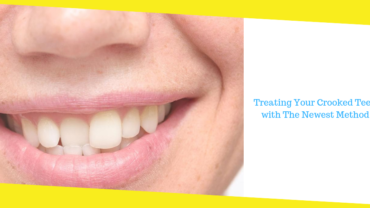Teenage Turmoil – The 6 Predominant Health Struggles Facing Teens Today
The pathway from childhood to adulthood is punctuated with various health concerns, emerging from the physiological changes occurring within and the external pressures and shifts in emotional landscapes accompanying the teenage years.
The health issues facing teens in America aren’t solely their burden but echo in the corridors of family homes, schools, and community centers. It’s a collective reflection of societal, environmental, and personal factors that weave into their day-to-day lives. Addressing these concerns doesn’t just involve alleviating immediate suffering but encompasses a holistic approach that underpins their transition into adulthood, fortifying them with the resilience and robustness to navigate through life’s forthcoming chapters.

We will delve into six common health dilemmas teens encounter, exploring their root causes and dissecting viable strategies to manage, mitigate, and potentially mollify their impacts.
Contents
Toggle1. Battling the Obesity Epidemic
Teen obesity garners consistent attention due to its soaring prevalence and multifaceted implications. Beyond the evident physical health detriments, obesity curtails a teen’s emotional and social wellbeing, often cascading into a tumult of additional issues, including poor self-esteem and social isolation. Addressing obesity is not merely a conversation about weight but encompasses dietary habits, physical activity, and an introspective look at the emotional factors that may contribute, such as stress or anxiety. Solutions often revolve around fostering environments that promote healthy eating and active living, yet these mustn’t morph into pressure cookers of unrealistic expectations. Engaging teens in activities they enjoy, be it dancing, cycling, or any other form of exercise that doesn’t feel punitive, alongside a diet that’s not restrictive but rather health-focused and balanced, paves a sustainable path forward.
2. Addressing Acne and Skin Concerns
As the most visible organ, skin becomes a paramount concern during the teen years. Acne treatment has become a pivotal point in adolescent healthcare, addressing physical and psychosocial wellbeing. Acne, while mostly perceived as a superficial issue, seeps into self-esteem and social interactions, often becoming a source of emotional distress. Addressing acne isn’t confined to topical treatments alone but extends into understanding and mitigating underlying causes such as hormonal changes, diet, and stress. Education about skin care, gentle yet effective treatment options, and psychological support collectively create a nurturing approach to managing acne and related skin issues.
3. Mental Health Matters
Mental health among teens commands attentive discourse, considering its pervasive impact. Anxiety, depression, and other mental health issues aren’t merely phases but substantial concerns that warrant recognition and support. Encouraging open dialogue, facilitating professional help, and destigmatizing mental health discussions emerge as critical. Adopting a proactive and empathetic stance while ensuring teens have access to resources and a safe space to voice their struggles crafts a supportive environment for navigating mental health challenges.
4. Substantive Approaches to Substance Abuse
Within the tumultuous journey of adolescence, substance abuse poses a tangible threat. Sending your teen away for treatment has been shown to produce long-term results. States like California are known for their success rates, so finding treatments for sober living in southern California or even further north is the first step in the right direction. It’s not merely about tackling substance use but understanding the emotional or social factors that might propel such behaviors. Addressing substance abuse comprehensively involves a coalition of professional intervention, family support, and, often, a radical environmental change to detach from potentially harmful influences and triggers.
5. The Struggle with Sleep
Sleep, often sacrificed amidst social activities, studying, and screen time, becomes crucial to teen health. A lack of quality sleep doesn’t solely induce physical fatigue but adversely impacts cognitive function, emotional wellbeing, and overall health. Advocating for adequate sleep involves restructuring and prioritizing activities to ensure that rest isn’t compromised while also focusing on creating conducive sleep environments devoid of distractions and disturbances.
6. Digital Dilemmas and Screen Time
Lastly, navigating the digital realm involves addressing the benefits of limiting screen time, which surpasses mere ocular health, and diving into physical activity, social interaction, and sleep quality. Establishing boundaries and cultivating habits that encourage physical activities and in-person interactions fortify teens with a balanced perspective toward digital usage. It’s not about elimination but moderation, ensuring digital interactions don’t overshadow physical ones.
Teenage years, punctuated with pivotal physiological and psychological transitions, witness an array of health concerns that demand collective attention and comprehensive approaches. From tangible issues such as obesity and acne to the often understated mental health and sleep concerns, addressing the multifaceted health dilemmas encountered during adolescence necessitates an amalgamation of medical, psychological, and socio-environmental interventions. It’s a collaborative dialogue encompassing teens, caregivers, health professionals, and the wider community, aspiring towards fostering environments and habits that pave the way toward wholesome, robust adulthood.
Recommended For You
Treating Your Crooked Teeth with The Newest Method!
Most Inside
Most Inside offers high-quality recommendations and valuable updates to enhance all aspects of your life, providing premium guidance and enriching experiences.




